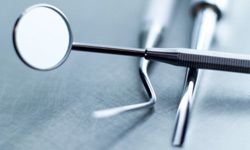Sitting reclined at the dentist's office, you find yourself surrounded by dental instruments ranging from shiny picks to handheld drills and UV light guns. Knowing the purposes for all these dental tools seems daunting. Yet every time you speak with your hygienist and dentist, they tell you some of the most important tools for good dental health lie in your own hands. How can that be?
Much of keeping your 32 teeth healthy -- 28 total for those lacking wisdom teeth -- depends on your day-to-day decisions with basic tools at home. As we look at a few of these great dental tools, keep in mind that dental health is shaped by a combination of factors, including a person's genetic background, diet, stress and other lifestyle activities. Since your dentist is probably your mouth's No. 1 fan, it's always a good idea to discuss using a new dental tool with your dentist. Also, substituting at-home care for routine dental exams is never recommended.
Advertisement
In this article, we'll focus on reliable dental tools that have a track record for being safe and effective. Frequently, it's the more simple instruments that get the job done.
Dentists recommend that every household sport our first two tools -- even our ancient ancestors created variants of them. Click to the next page to learn more.
